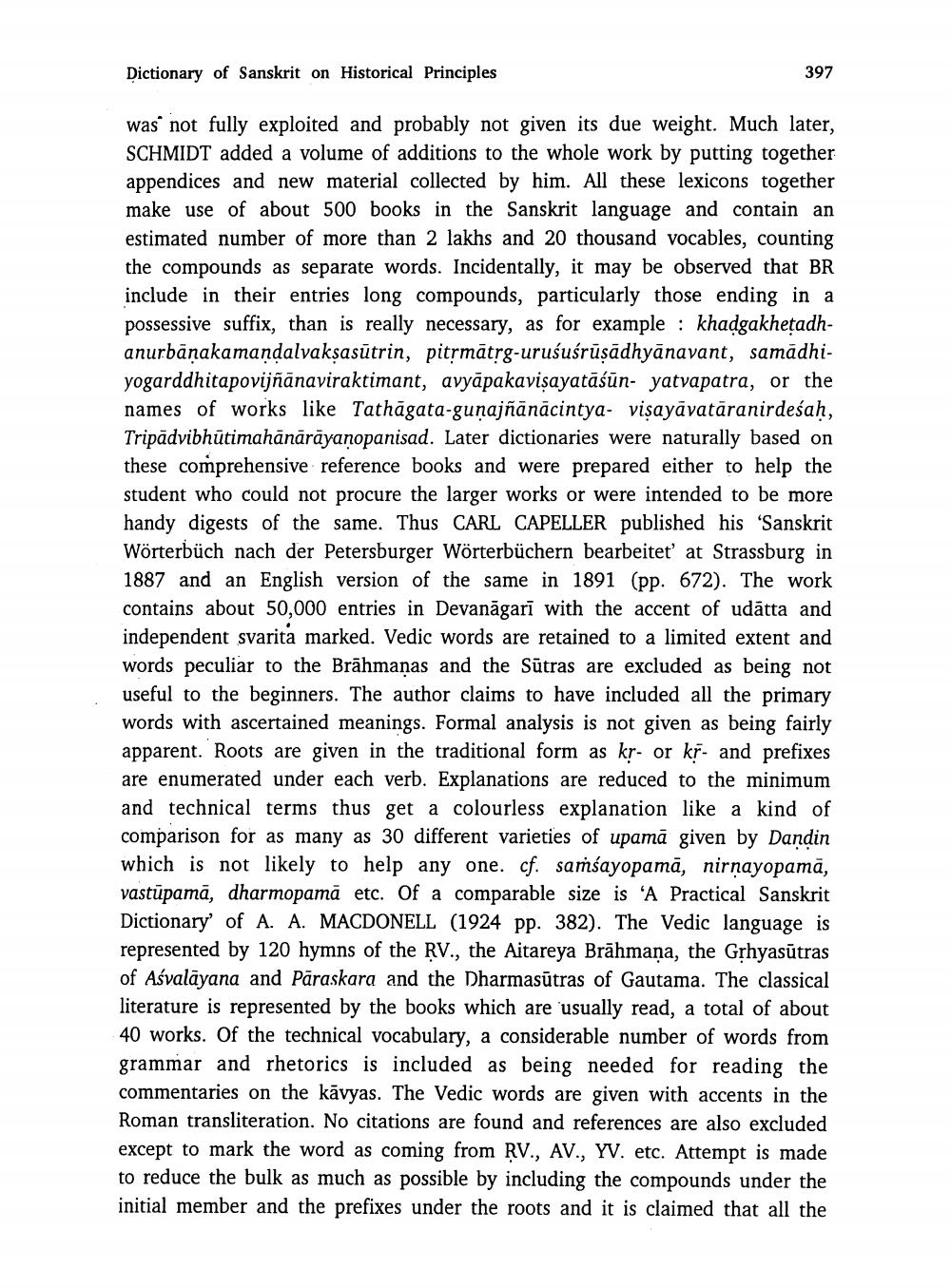________________
Dictionary of Sanskrit on Historical Principles
397
was not fully exploited and probably not given its due weight. Much later, SCHMIDT added a volume of additions to the whole work by putting together appendices and new material collected by him. All these lexicons together make use of about 500 books in the Sanskrit language and contain an estimated number of more than 2 lakhs and 20 thousand vocables, counting the compounds as separate words. Incidentally, it may be observed that BR include in their entries long compounds, particularly those ending in a possessive suffix, than is really necessary, as for example : khadgakhetadhanurbanakamandalvaksasutrin, pitrmặtrg-urusuorusadhyanavant, samādhiyogarddhitapovijñānaviraktimant, avyāpakavisayatāsūn- yatvapatra, or the names of works like Tathāgata-gunajñānācintya- visayāvatāranirdesah, Tripadvibhūtimahānārāyanopanisad. Later dictionaries were naturally based on these comprehensive reference books and were prepared either to help the student who could not procure the larger works or were intended to be more handy digests of the same. Thus CARL CAPELLER published his 'Sanskrit Wörterbüch nach der Petersburger Wörterbüchern bearbeitet' at Strassburg in 1887 and an English version of the same in 1891 (pp. 672). The work contains about 50,000 entries in Devanāgarī with the accent of udātta and independent svarita marked. Vedic words are retained to a limited extent and words peculiar to the Brāhmanas and the Sūtras are excluded as being not useful to the beginners. The author claims to have included all the primary words with ascertained meanings. Formal analysis is not given as being fairly apparent. Roots are given in the traditional form as kr- or kr- and prefixes are enumerated under each verb. Explanations are reduced to the minimum and technical terms thus get a colourless explanation like a kind of comparison for as many as 30 different varieties of upamā given by Dandin which is not likely to help any one. cf. saṁsayopamā, nirnayopamā, vastūpamā, dharmopamā etc. Of a comparable size is 'A Practical Sanskrit Dictionary of A. A. MACDONELL (1924 pp. 382). The Vedic language is represented by 120 hymns of the RV., the Aitareya Brāhmana, the Grhyasūtras of Ašvalāyana and Paraskara and the Dharmasūtras of Gautama. The classical literature is represented by the books which are usually read, a total of about 40 works. Of the technical vocabulary, a considerable number of words from grammar and rhetorics is included as being needed for reading the commentaries on the kāvyas. The Vedic words are given with accents in the Roman transliteration. No citations are found and references are also excluded except to mark the word as coming from RV., AV., YV. etc. Attempt is made to reduce the bulk as much as possible by including the compounds under the initial member and the prefixes under the roots and it is claimed that all the




